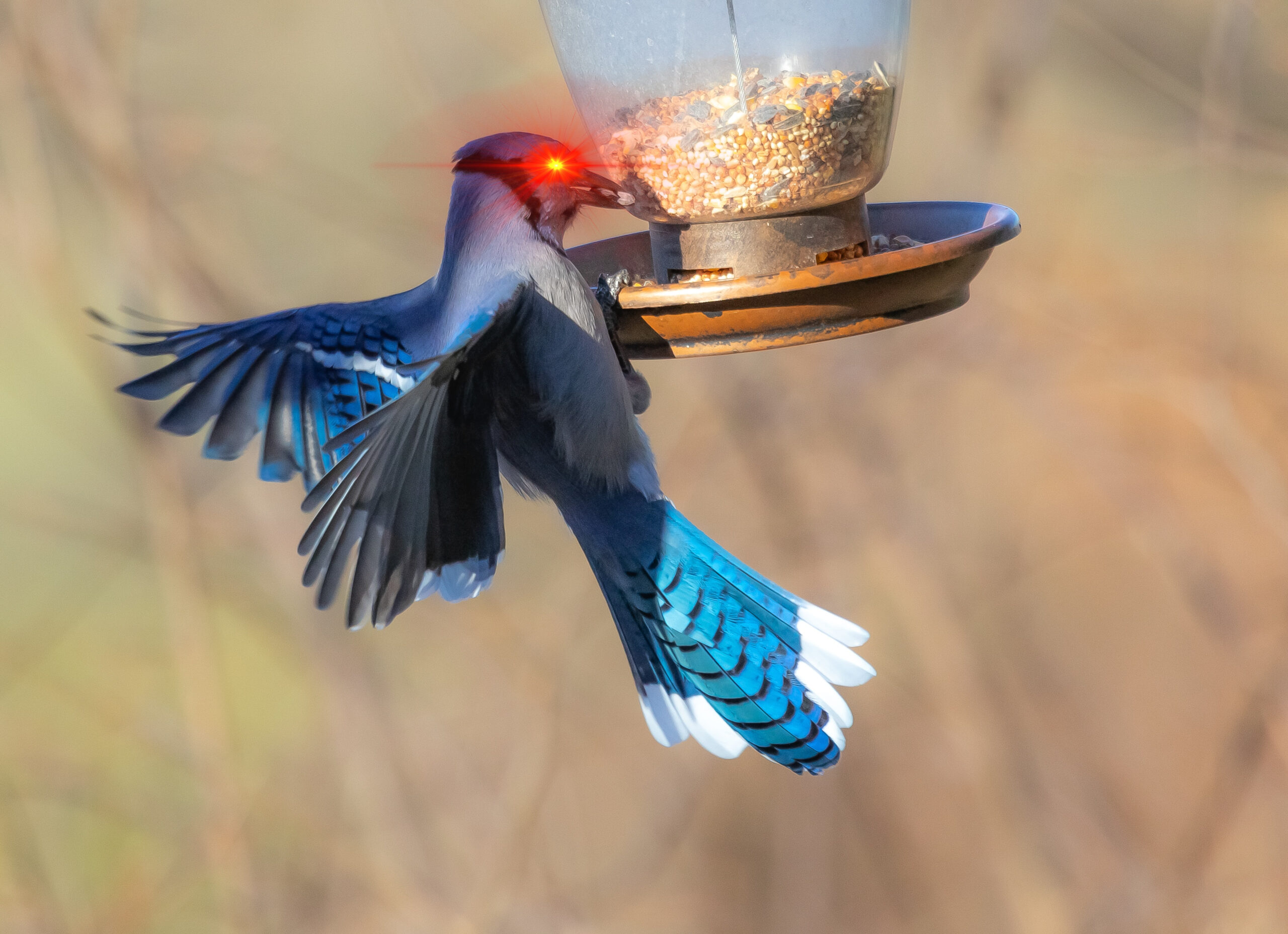Blue jays, with their striking blue plumage and bold character, are a familiar sight in many North American gardens and backyards. These gardens, often subject to visits from various wildlife like raccoons, squirrels, and crows, face a unique challenge from the beautiful yet obnoxious blue jay.
While these intelligent birds are admired for their beauty and complex social behaviors, they can become a source of concern for garden enthusiasts. Known for their aggressive tendencies, including the occasional predation of other birds’ chicks, blue jays can disrupt the harmony of a backyard ecosystem.
Additionally, their fondness for fruits, seeds, and their territorial nature often leads them to dominate feeders, intimidate smaller birds, and cause damage to gardens.
Therefore, in this article we’ll go over some humane and effective ways to get rid of blue jays so you can go back to having a balanced and peaceful garden!
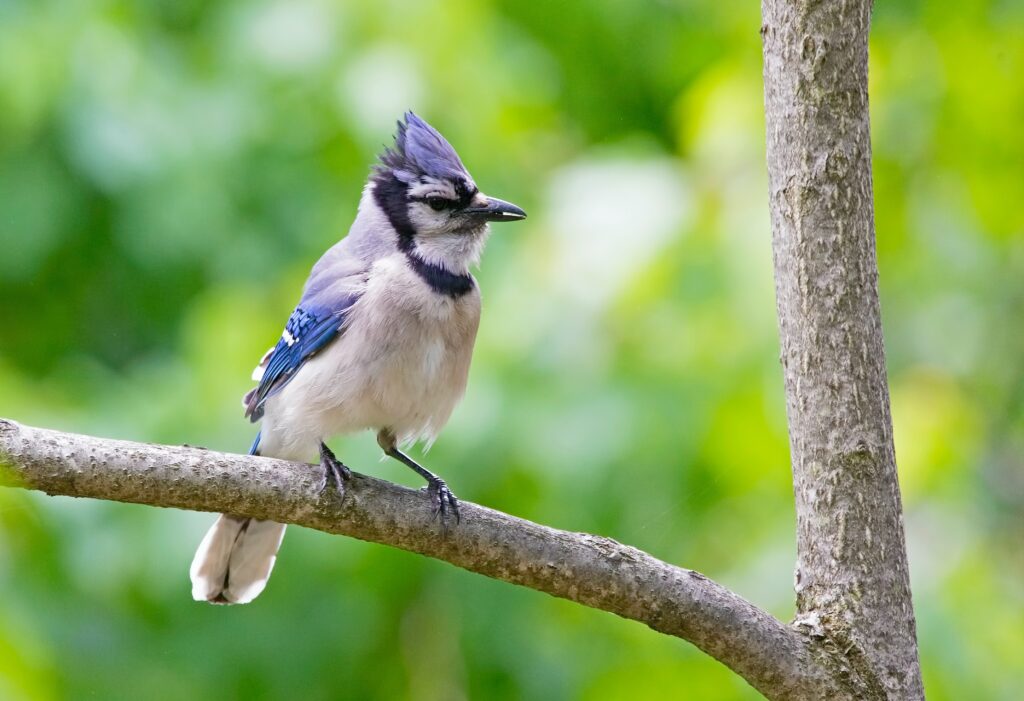
Understanding Why Blue Jays Invade Gardens
Blue jays, particularly the non-migratory ones, exhibit a strong territorial instinct, often driving them to seek out and establish their own domains.
This quest for territory is largely influenced by their basic needs: food, shelter, and mating opportunities. Consequently, the presence of abundant food sources like insects, nuts, and fruits in gardens makes them attractive locales for these birds.
Additionally, blue jays are drawn to areas that offer water sources such as bird baths and fountains. Their search for suitable nesting areas often leads them to gardens that provide ample resources, including bird feeders, compost piles, and lush vegetation full of fruits and vegetables.
It’s this combination of readily available food, water, and nesting sites that can make a well-kept garden an irresistible haven for blue jays. 😬
Recognizing the Signs of Blue Jay Infestation
Identifying a blue jay infestation in your garden is key to timely intervention, although it’s probably not hard to miss!
One of the most noticeable signs is their distinctive loud calls, which can often dominate the soundscape of your backyard. I can best describe it is a loud jeer! or jay!
Another sign to watch for is garden damage, including harm to fruit-bearing plants and trees caused by blue jay feeding activities.
Early detection of these signs is crucial. Addressing a blue jay presence promptly can prevent extensive damage to your garden and ensure that the ecological balance of your backyard is maintained, avoiding the need for more drastic measures later on.
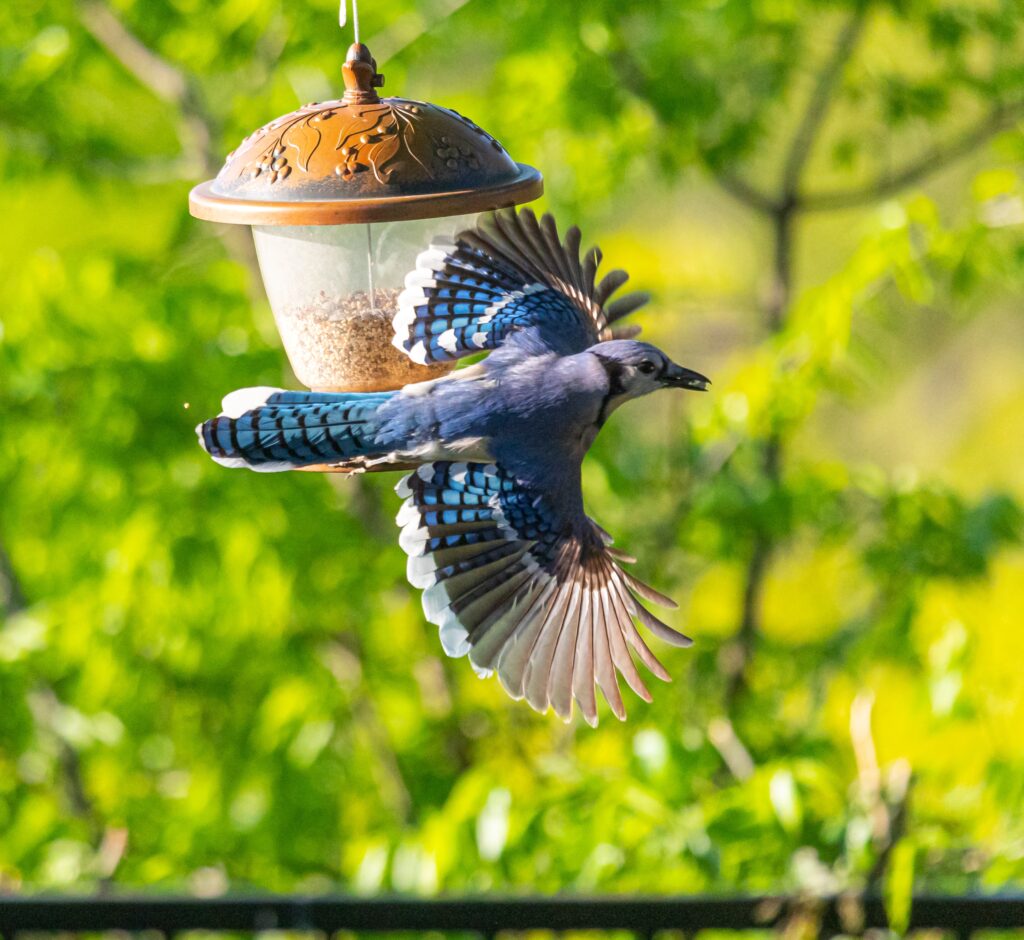
Methods For Deterring Blue Jays
- Using Decoys and Predators:
- Auditory Repellents:
- Modifying Bird Feeders:
- Managing the Garden Environment:
- Remove or secure food sources that attract blue jays, including cleaning up stray seeds.
- Changing the seed types in your feeders and setting up alternative feeders specifically for blue jays can help manage their presence without outright exclusion. Nyjer thistle seed is a favorite among finches but not a hit with blue jays.
- Physical Barriers:
- Chemical Repellents:
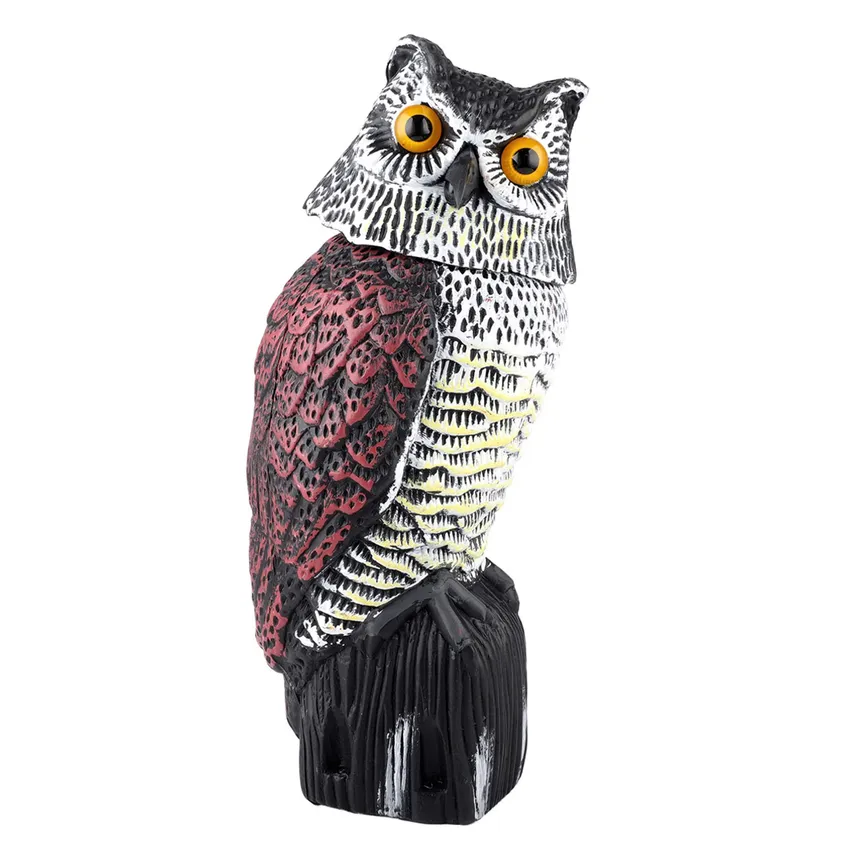
Importance of Humane Methods
While managing blue jays in gardens, it’s essential to remember their positive contributions to the ecosystem.
Blue jays are not only visually striking with their vibrant blue feathers and crested heads but also play a role in seed dispersion and pest control. Their intelligence and complex social structures add a dynamic presence to any garden.
Given these beneficial traits, it’s important to employ humane methods in controlling their numbers. Ethical considerations are paramount, as our actions can significantly impact the local environment and biodiversity.
By choosing non-lethal and eco-friendly strategies, we respect nature’s balance, ensuring that our gardens remain a sanctuary for a diverse range of wildlife.
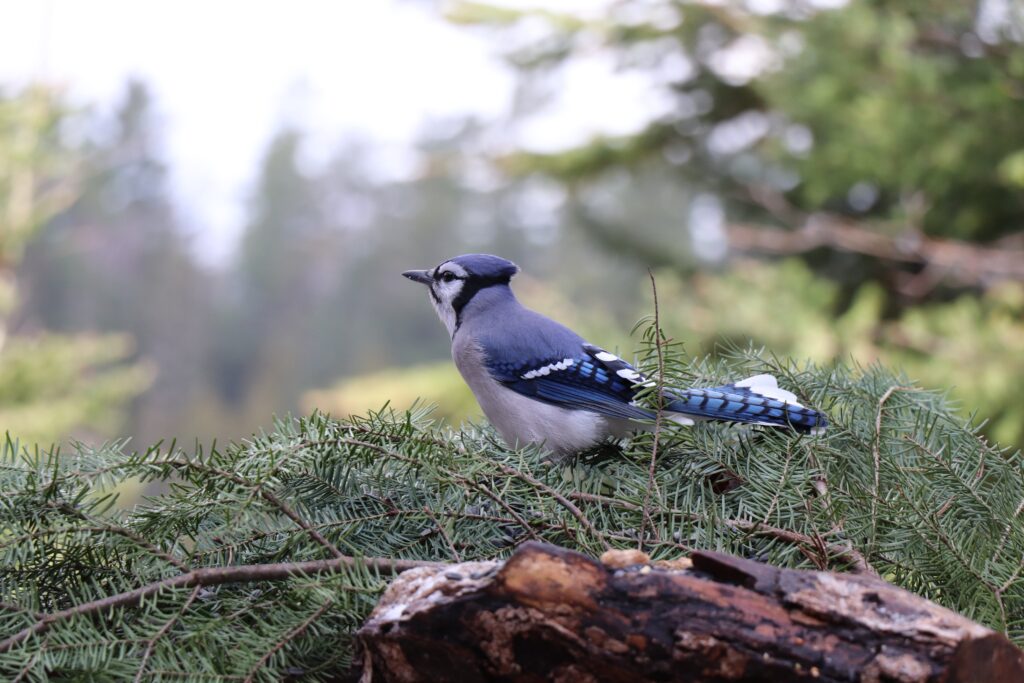
Conclusion
In conclusion, understanding how to get rid of blue jays in gardens involves a combination of knowledge, creativity, and a deep respect for wildlife.
By recognizing the signs of their presence and understanding their behavior, we can employ various humane methods to deter them.
These include using decoys and auditory repellents, modifying bird feeders, managing the garden environment, and implementing physical barriers.
While blue jays can be challenging, their striking beauty and ecological roles enrich our outdoor experiences.
Balancing our enjoyment of wildlife with maintaining a peaceful garden environment is key.
With thoughtful strategies, we can coexist with these vibrant birds, ensuring our gardens remain tranquil and thriving havens for all creatures. 🌿🐦💙

